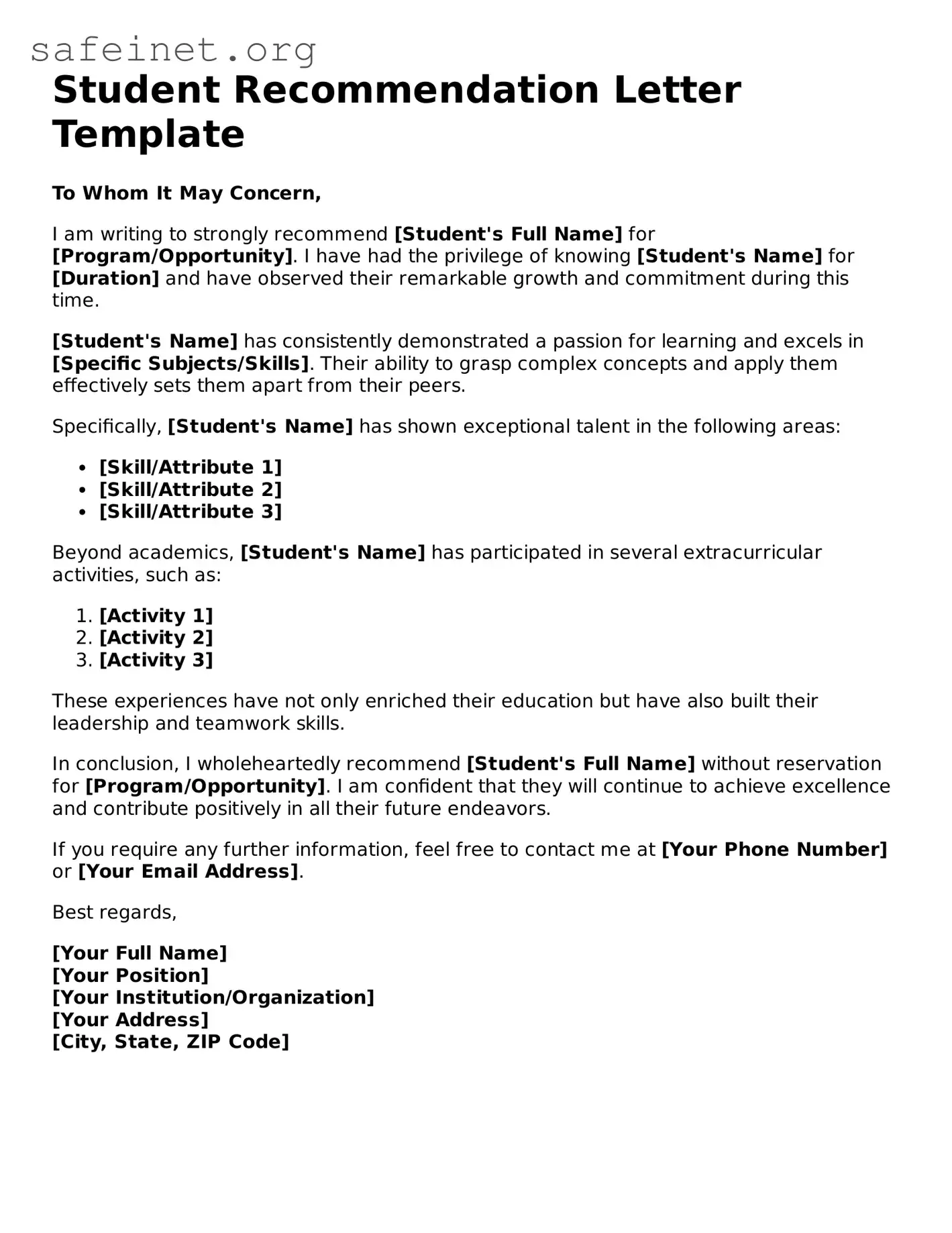What is a Student Recommendation Letter?
A Student Recommendation Letter is a document that provides insight into a student's capabilities, character, and achievements. It is usually written by teachers, mentors, or supervisors who know the student well and can provide an informed perspective on their skills and potential for future endeavors.
Who can write a Student Recommendation Letter?
Typically, a recommendation letter is written by someone who has had a significant academic or professional relationship with the student. This can include teachers, school counselors, coaches, or employers. The key is that the writer can provide a credible and personalized assessment of the student.
When do I need to submit a Student Recommendation Letter?
Submission timelines can vary based on the institution or program. It’s crucial to check the specific requirements of the college, scholarship, or internship for which the recommendation is being sought. Most often, these letters are needed well in advance of application deadlines to allow for review and processing.
What should be included in the letter?
An effective Student Recommendation Letter should include specific examples of the student’s achievements, character traits, and how they have excelled in their academic or extracurricular pursuits. Additionally, it should highlight the relationship between the writer and the student, providing context to the observations made in the letter.
How long should the student recommendation letter be?
Generally, a recommendation letter should be one page in length, typically around 300-500 words. This length allows the writer to provide sufficient detail while remaining concise and to the point.
Is there a specific format for the letter?
While there is no universally mandated format, a standard letter format is ideal. This usually includes the date, the recipient’s information, a subject line, a greeting, the body of the letter, and a closing signature. If there are specific instructions from the requesting institution, those should take precedence.
How do I ask someone to write a recommendation letter?
Approaching someone to write a recommendation letter should be done respectfully and thoughtfully. It’s best to ask in person or via email, giving them enough time to consider your request. Providing them with context about why you need the letter and offering details about your achievements can help them write a more personalized recommendation.
Can I use the same recommendation letter for different applications?
While you can use the same letter for multiple applications, it’s advisable to tailor it to fit each situation. Some colleges or programs may value different aspects of your achievements or character, so a personalized letter can make your application stand out more effectively.
What if I need to provide multiple letters?
If multiple recommendation letters are required, ensure each one comes from a different individual who can address different aspects of your qualifications. This provides a well-rounded view of you as a candidate and showcases various strengths and achievements.
How will I know if my recommendation letter was submitted?
Most colleges and organizations have systems in place to confirm receipt of recommendation letters. You can usually check your application status online or ask your recommenders to notify you once they have submitted the letter. Always follow up respectfully to ensure everything is in order.
